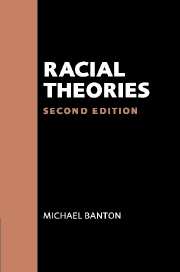7 - Race as social construct
Published online by Cambridge University Press: 09 November 2009
Summary
Properly to explain how a social category is created by reference to the physical features called ‘race’, it is necessary to draw comparisons with what is known about the creation of other categories, such as those identified by gender, class, national and ethnic origin and so on. The problem has to be subsumed within a more general theory of how groups of all kinds are constructed. This may be a way to differentiate a theoretical from a practical language and to resolve the dilemma of nomenclature mentioned at the beginning of the book.
This chapter offers a report on progress towards a bottom-up theory which could supersede the use of ‘race’ in the attempt to explain why it is that the outward differences between persons, and the cultural characteristics associated with differences in national or ethnic origin, appear to cause social and political tension. It pulls together and restates some of the conclusions drawn in earlier chapters.
Socialisation into groups
Human individuals are born with differing talents and personal characteristics. During the course of their socialisation they learn about the society into which they have been born, how its members are categorised and with which groups they should identify themselves. They learn whether they are male or female, and what kinds of conduct are expected because of this distinction. They may learn that they belong to national, regional, class, caste, religious, racial or ethnic categories or groups; that they should align themselves socially with fellow members of such categories, and that in any event others will treat them as category members.
- Type
- Chapter
- Information
- Racial Theories , pp. 196 - 235Publisher: Cambridge University PressPrint publication year: 1998



